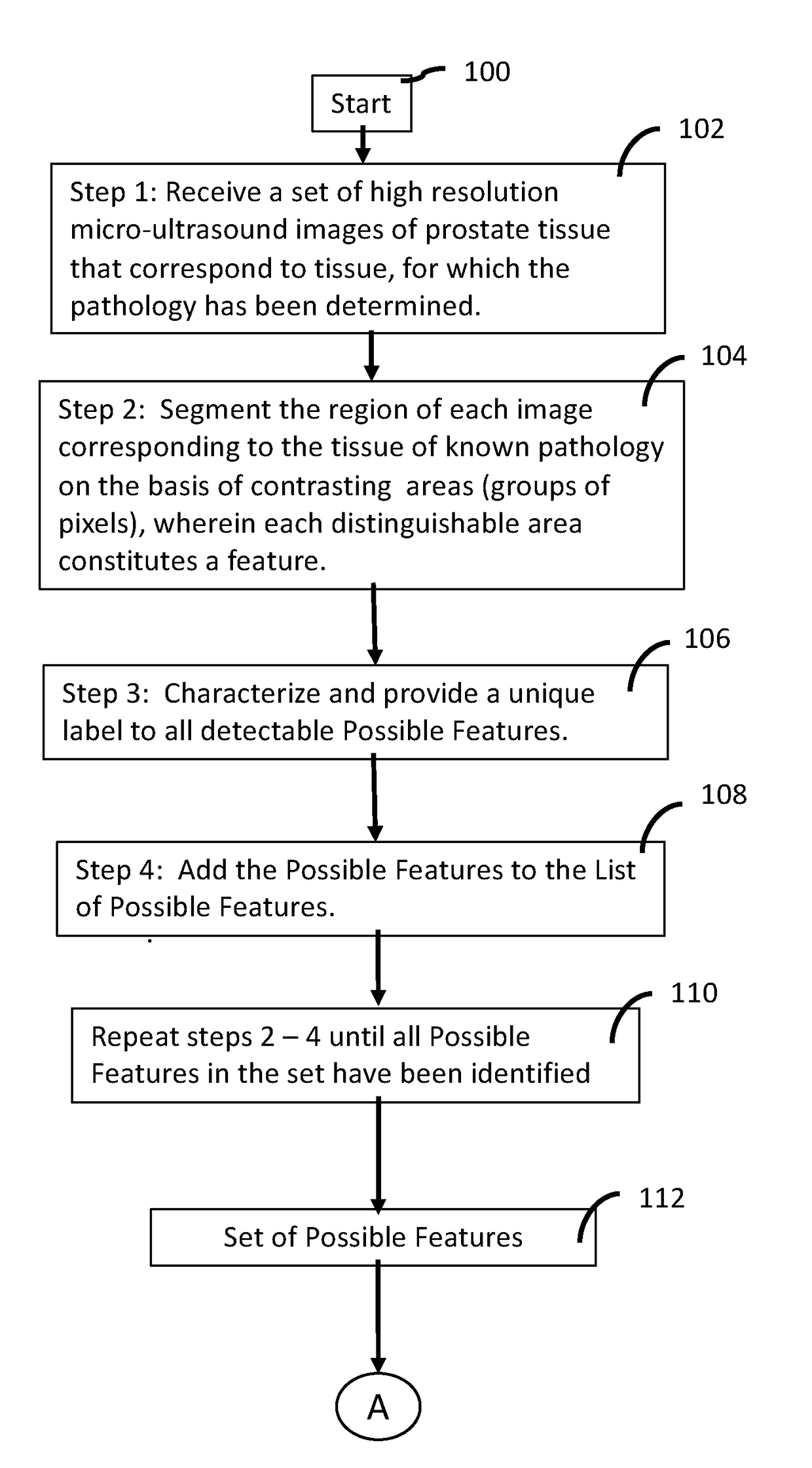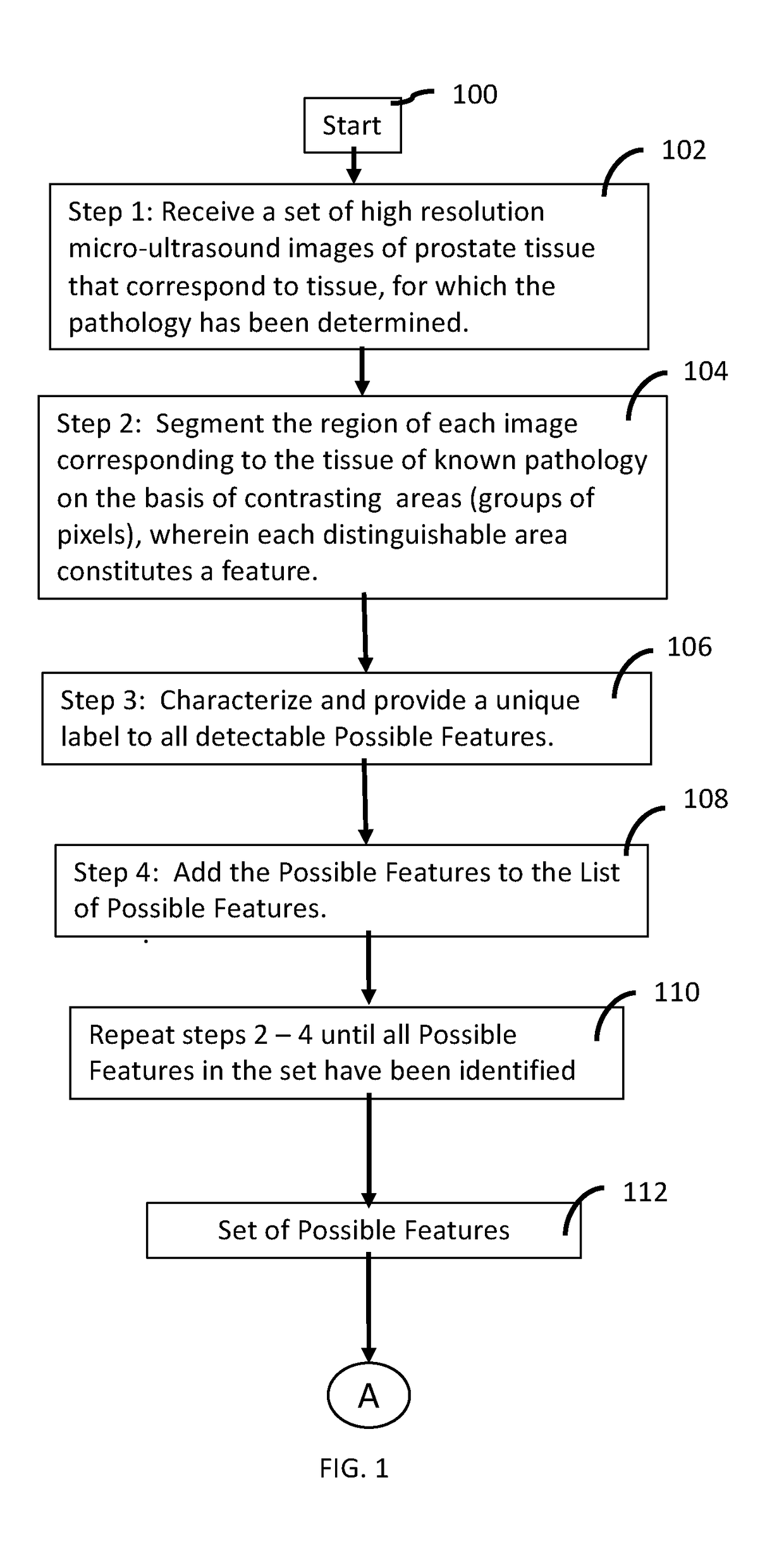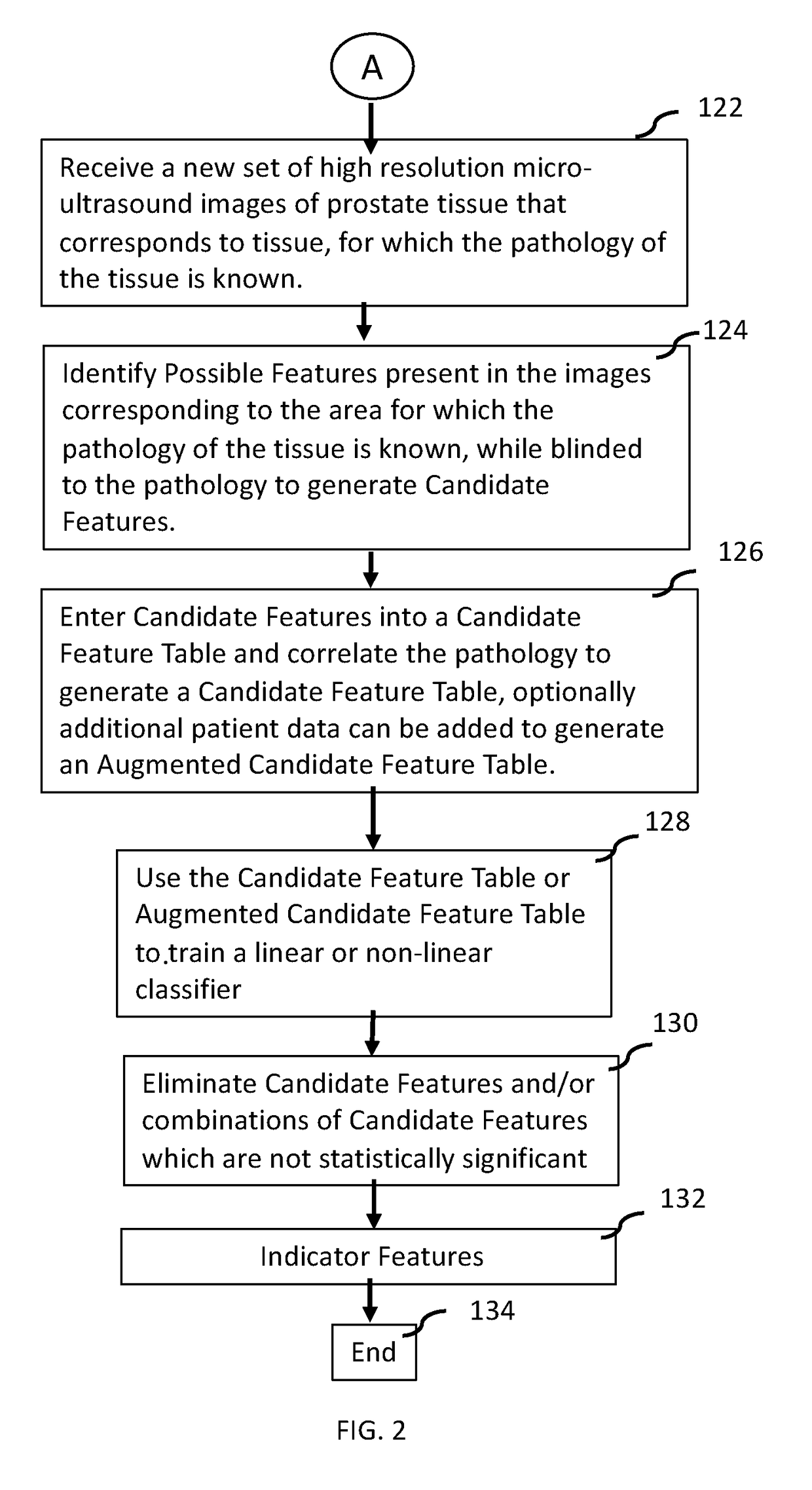System comprising indicator features in high-resolution micro-ultrasound images
a high-resolution micro-ultrasound and indicator feature technology, applied in the field of medical imaging and diagnostics, can solve the problems of obstructing the urinary tract, trus is not reliable enough to be used solely as a biopsy template, and the accuracy of trus was only 52%, so as to facilitate the diagnosis of the tissue
- Summary
- Abstract
- Description
- Claims
- Application Information
AI Technical Summary
Benefits of technology
Problems solved by technology
Method used
Image
Examples
Embodiment Construction
[0037]This invention provides a method of generating Indicator Features, Indicator Features and their use in a system comprising high resolution micro-ultrasound to determine a degree of risk for cancer in prostate tissue. Indicator Features are provided in high resolution micro-ultrasound images and are used to train a classifier, which can be used to determine a risk of cancer in other images, or can be grouped into a multiclass classifier, which can be used to determine a risk of cancer.
[0038]A Method of Generating Indicator Features
[0039]With conventional ultrasound, there was essentially only one feature available, a dark spot (hypoechoic region), which was used in the images as a possible indicator of cancer. As described in the Background, this feature correlated poorly with cancerous tissue. Thus, there was little confidence that ultrasound technology in general would be useful for identifying risk of cancer. Initially, once the prostate was able to be visualized with high r...
PUM
 Login to View More
Login to View More Abstract
Description
Claims
Application Information
 Login to View More
Login to View More - R&D
- Intellectual Property
- Life Sciences
- Materials
- Tech Scout
- Unparalleled Data Quality
- Higher Quality Content
- 60% Fewer Hallucinations
Browse by: Latest US Patents, China's latest patents, Technical Efficacy Thesaurus, Application Domain, Technology Topic, Popular Technical Reports.
© 2025 PatSnap. All rights reserved.Legal|Privacy policy|Modern Slavery Act Transparency Statement|Sitemap|About US| Contact US: help@patsnap.com



